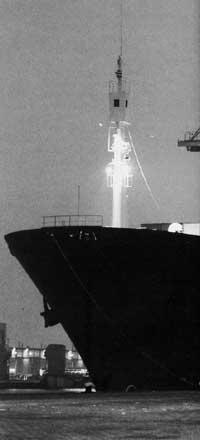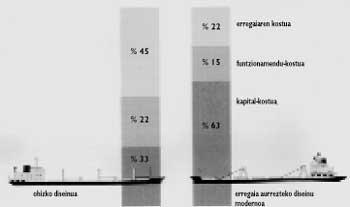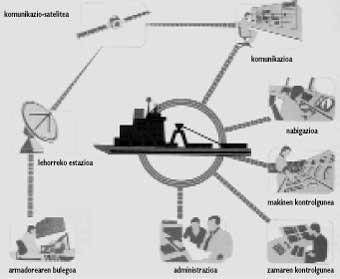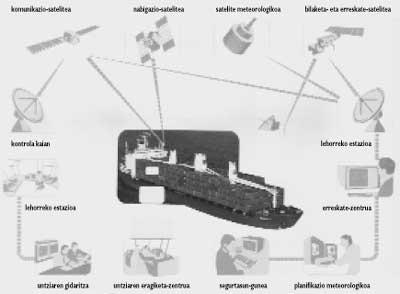Ships of the future
The Maritime Administration analyzes the influence of new technologies on ship safety and crew organization in the EHEA. Therefore, the main research is satellite communications and the development of advanced management methods.

In Germany the project called “Boat of the Future” (Schiff der Zukunft) began to develop in 1980. The main object of study was the design and equipment of boats, for which some 70 subprojects were designed. Topics covered were hull design, machinery, cargo transportation, safety, navigation and the human environment. At the same time, it sought to create a computerized diagnostic system for machine failure detection and maintenance optimization.
The Japanese began developing the “Smart Ship” in 1983. The project involved, together with the Ministry of Transport, industry and university. Industrial robots have been used in the construction of smart boats and, above all, the improvement of propulsion machinery has been one of the most important objectives. Although it is now acceptable that there is a breakdown of 1,000 hours of operation, this number will be transferred up to 20,000 hours of operation. Once this has been achieved, together with the operation of the vessel, advanced automation and labor reduction, the diagnostic system for breakdowns, automatic navigation and automation systems for the entry and exit of ships in ports must be analyzed.
Two development programmes for navigation in Norway were developed in the 1980s: “Operation of the ships of the future” and “Efficient maritime operation”. The aim of these two projects was to remain a quality and competitive Norwegian maritime industry. Successfully embarked several test boats with advanced computer automation and satellite driving.

The trend of the international market and the need to pay high wages of industrialized countries will provoke the creation of ships of advanced technology. More expensive materials will be used to improve operating efficiency and reduce maintenance costs. Thus, specialized ships will become ordinary.
In giant ships it will be possible to reduce fuel consumption by 50% when low-consumption engines are accepted in the market. The new international standards for safety and environmental protection must be taken into account in the design and equipment of ships. Advanced automation equipment and mechanisms will be used to reduce labor in maneuvers, mooring and maintenance.
Computers will play an important role in operating control and security. Crew members must have a wider preparation and the crew will be composed of fewer people, so they will have to change their way of working. New communications technologies are expected to be incorporated into marine fleets around the world. The greater efficiency in the communication between the ship and the land through maritime satellites facilitates the realization of some of the necessary operations.
Near-future ships will be designed and built as automated floating factories. They will have a small number of computers, each with a specific function such as machine monitoring, administrative calculations, navigation, communication, etc. These computers will be connected to each other forming a network and will be connected via satellite with terrestrial computers. These new systems will allow you to find the best travel and the most suitable speed. Increased control of propulsion needs and machine status. Irregularities that may occur in the hull by effect of plantations and algae will also be controlled.
Satellites for the maritime industry, Marecs A and B2 and Inmarset 2, have been developed in Europe by the International Marine Satellite Organization (Inmarsat). It is a non-profit organization in which several nations with interests at sea participate.
The increasing use of data by maritime offices in the international market has increased the importance of electronic media. Communication between ship leadership and ground offices has also seen remarkable growth, which has made telematics increasingly normal.
As a result of the above, three facts can be seen simultaneously in the maritime industry. On the one hand, the number of conventional management boats is being reduced. On the other hand, the number of ships of advanced management, despite the years of existence of these ships, is increasing and, finally, the construction of ships of sophisticated technology is growing.
In short, almost XXI. The robotization of construction processes, the use of advanced technologies in propulsion, machinery and control, and the conduction of satellites, will be the fundamental pillars of construction.








